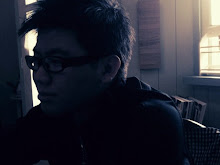
Based on the assignment brief, I am required to have a personal trip to a spiritual place to develop the analyzing job for the essay. And I chose the temple which is located in Taman Yulek, Cheras, called Ci De Miao(慈德庙). The public also call it as Wong Lou Sin Si (黄老仙师).
From what Heidegger says, a temple should have at least a God, or else it won’t be called as temple. It will be other things else. Generally, the reason why the temple is built is the people want to give appreciation to the God through worship, because the people believe that God will give help to them if they face any dilemma. So that, as gratitude, they build the temple to worship the God. It is just the belief, man believes the God so that they build the temple. Indirectly, there is a existence of Chinese tradition. For Chinese, reciprocity is an important and good tradition that has to be passed along to the future generation. I believe it goes the same too for other races.
Man and nature are always closely related. It is just the same like the question between chicken and egg. Which one exists first? There is no proper answer for this. What can be explained is both of them complement each other, dispensable. In other way of saying, human can’t live without nature and nature can’t exist without human. The same principle applies to architecture field. Buildings have to complement with environment and the surroundings. It is not a good design if one of them doesn’t coordinate to another.
In architecture field, place and space play important roles in designing. Both of them are also complement to each other too. A place should have space and space can create a place. According to Heidegger, place is created by connection of different spaces. I am not sure whether it is right but I agree what he said. Connection of different spaces not only creates place, it even creates more interesting design of place in the sense of creativity.
Incense burner
Dwelling means a place to stay. In the Heidegger’s thinking, a building is a constructed object to dwell people. It means a place to stay in. But first of all, the basic requirement for a dwelling is it should be comfortable to live in. It is useless if the outlook of the building looks awesome but the interior part looks bad. Comfortable is the most basic requirement for a dwelling. Besides comfort factor, it is a challenge to have unlimited creativity in a limited space (inner part of dwelling). For my opinion, architecture needs to concern both the outlook and interior part because both of them are playing the important role for the whole building. For example, one will look the outlook of the building, and then one will go in the building to experience the interior. Exterior and interior have to be positive all the way, neither can be negative.
To communicate, we need to have language, either verbal or body language, we need one of it. It goes the same in architecture. “Man dwells between work and word” Heidegger said. It is absolutely true. At the initial part of design process, word brings out work whereas at the final stage, work results word. I had been emphasizing on the word “complement” for few times. Undeniable, this word suits the condition here too. After a good work produced, good expression of word is needed to be presentable.
As a conclusion, COMPLEMENTARY is a key that exist in the topics of architecture field. Nothing can go too much and nothing can be so less in architecture. Coordination is the main issue in COMPLEMENTARY too.All the things need to be in proper ratio to make it a good design.








No comments:
Post a Comment